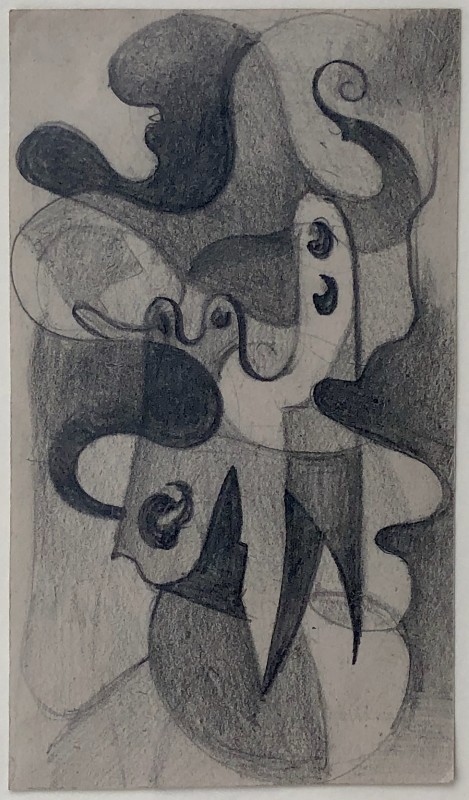In 1914 Cuthbert Hamilton, described by David Bomberg as 'a natural born painter' stood triumphantly at the forefront of the English avant-garde. A contemporary of Wyndham Lewis at the Slade, he was to remain perhaps Lewis's most loyal collaborator during the formation of the Vorticist movement. In 1912 he assisted Wyndham Lewis with his decoration for the Cave of the Golden Calf. In 1913 he joined the Omega Workshops but left after Lewis's rift with Roger Fry. Hamilton exhibited at the Second Post-Impressionist Exhibition, the 1913 Post-Impressionist and Futurist Exhibition at the Doré Galleries organized by Frank Rutter and in the Cubist Room of the 1913-14 Brighton Exhibition. He also showed with the London Group and was a member of Wyndham Lewis's Rebel Art Centre. A signatory of the Vorticist Manifesto, he contributed to Blast No. 1 and to the Group X Exhibition of 1920. In 1915/16 Hamilton set up Yeoman Pottery in Kensington and began to concentrate more on pottery employing William Staite Murray as his assistant. His work there was interrupted by the First World War in which he served as a special constable. Influenced initially by Wyndham Lewis, his work used energetic, radically distorted and simplified forms with jagged, mechanistic shapes and vigorous diagonals. After 1916 he became more interested in organic shapes, perhaps guided by his focus on pottery designs, and the work he exhibited at the 1920 Group X show whilst still starkly abstract was less obviously Vorticist in feel. However, Hamilton continued with abstraction when all of his Vorticist colleagues, including Lewis, had reverted back to figurative painting and he must be seen as one of the pioneers of abstract art in Britain. Reviewing Hamilton's work exhibited at the Group X show in 1920, Michael Sadlier suggested that his integrity justified 'the extreme in non-representation'. After marrying the daughter of an insurance magnate, Hamilton closed Yeoman Pottery in 1920 and gave up all creative activity and never exhibited anything again in his lifetime although he lived until 1959. Incredibly few works by Hamilton have survived and his work is extremely rare on the market. The Tate Gallery in London holds a painting by him and the Victoria and Albert Museum in London have an example of his pottery.
